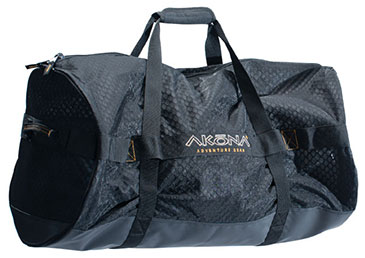Lesson 52
Objectives
Look for the answers to these questions:
1. Why do I need a dive gear bag?
2. How do I choose a gear bag?
Dive Gear Bags
You need a dive gear bag to carry and protect all your equipment, except weight, cylinders and dry suits. Although many gear bags look similar to other types of luggage available, they’re specifically designed for dive gear. Salt water won’t ruin their zippers, nor will their material rot. Gear bags are designed to survive the stresses of transporting dive equipment. Diving quickly destroys most luggage bags not intended for this use.

You have many options in choosing a gear bag with respect to straps, configuration, pockets and wheels available at your PADI dive shop. Choose your gear bag based on your preferences, but also based on size. Select a bag slightly larger than you need for all the gear you have, because you tend to add gear as you gain dive experience, and this gives you room to grow.

Dive tool – This is generally a dive knife with the sharp tip replaced with a prying tool. Other than that, dive tools have the same general options as dive knives. Local authorities may or may not classify them as knives.

Shears – Dive shears are especially suited to cutting fishing line and net. They are popular with divers likely to encounter monofilament line and net, particularly on wrecks. These are not usually restricted legally.

Z-knives – Z-knives are hooks with a blade specifically for cutting fishing line or net. They let you cut quickly, and their shape reduces the risk of accidentally cutting yourself or your equipment. Because they’re not useful for heavy rope or other purposes, you generally carry a z-knife in addition to a dive knife or tool.

Mounting Cutting Tools
Cutting tools have sheathes you can mount many places based on your preferences, such as on your BCD hose, on a waist strap, strapped inside your leg, attached to the back of a console or on your wrist. Many divers like to have two – a dive tool and a z-knife. Wear your tool where you can reach it with either hand so it is accessible with either arm entangled.
Quick quiz
Module Two

I'll take you diving!
Copyright © Larry Wedgewood Scuba Instruction All Rights Reserved

